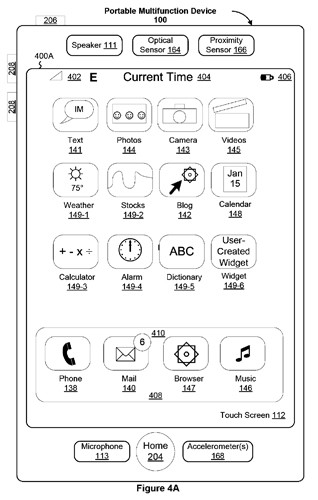Apple’s Multi-Touch Patent
In der Telefonkonferenz zu den ersten Apple Quartalszahlen 2009, zeigte Tim Cook den zugeschalteten Journalisten auf Nachfrage konkurrierender Produkte ein bisschen die Zähne indem er sagte:
We approach this business as a software platform business. We are watching the landscape. We like competition as long as they don’t rip off our IP [Intellectual property]. And if they do, we will go after anyone who does.
Obwohl Cook keine Produkt- oder Firmen-Namen nannte, antwortet die Palm Pressestelle vor wenigen Tagen mit einem Kommentar gegenüber John Paczkowski, Digital Daily:
„Palm has a long history of innovation that is reflected in our products and robust patent portfolio (31 pages of patents in Google Patent Search), and we have long been recognized for our fundamental patents in the mobile space,” she told Digital Daily. “If faced with legal action, we are confident that we have the tools necessary to defend ourselves.“
Den (teils erzwungenen) ‚Trash-Talk‘ sollte man nicht überbewerten. Auch in Amerika richtet sich die Patentvergabe und -Bestätigung nicht automatisch an Denjenigen, der am lautesten weinend und schreiend am Boden liegt.

World of Apple verlinkt aktuell ein Patent-Dokument mit der Nummer 7.479.949, das uns bereits seit Mai 2008 verfolgt – damals noch mit einer inoffiziellen Bezeichnung: ‚The iPhone Patent‘.
Der jetzt vom ‚US Patent Office‘ abgesegnete – und 358 Seiten starke – Schrieb trägt den Titel:
Das Schriftstück ist auf den 20.01.2009 datiert und enthält als Patent-Begünstigten (unter anderem) Steve Jobs und Scott Forstall.
Ohne mir das umfangreiche Manuskript komplett zu Gemüte geführt zu haben, klingt die Zusammenfassung stark nachdem, was das iPhone an Technik beinhaltet. Mögliche Streitigkeiten überlasse ich Anwaltsbüros und Gerichten:
A computer-implemented method for use in conjunction with a computing device with a touch screen display comprises: detecting one or more finger contacts with the touch screen display, applying one or more heuristics to the one or more finger contacts to determine a command for the device, and processing the command. The one or more heuristics comprise: a heuristic for determining that the one or more finger contacts correspond to a one-dimensional vertical screen scrolling command, a heuristic for determining that the one or more finger contacts correspond to a two-dimensional screen translation command, and a heuristic for determining that the one or more finger contacts correspond to a command to transition from displaying a respective item in a set of items to displaying a next item in the set of items.
via Mac Rumors